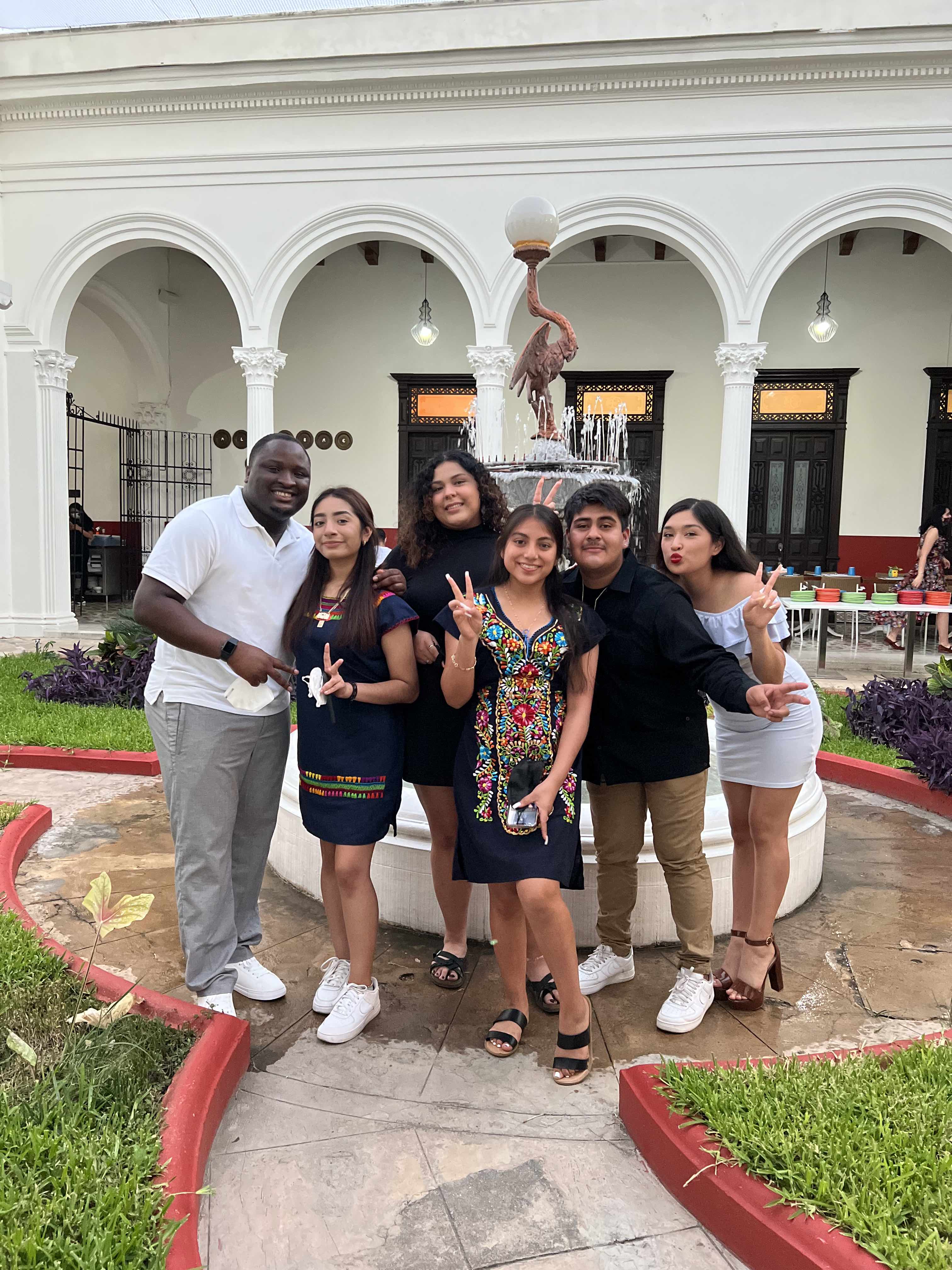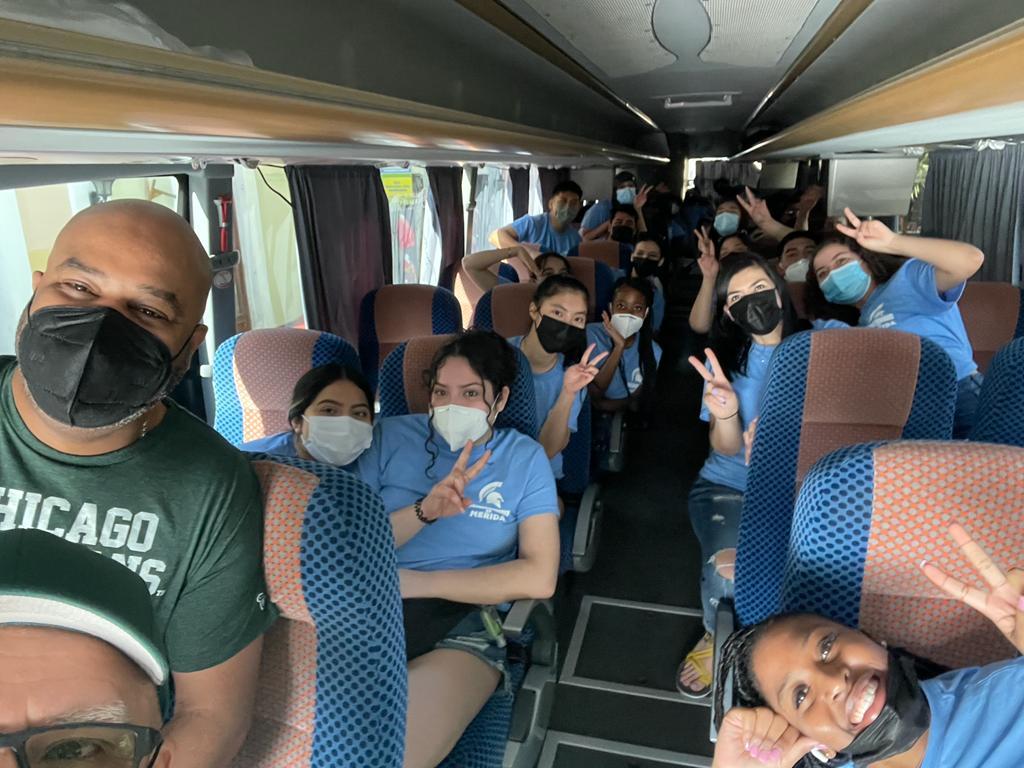International Engagement in Mexico is one of the largest and most diverse study abroad programs at MSU and is housed in Migrant Student Services. The program is a partnership with the Office for Education Abroad, Office for Cultural and Academic Transitions and the College of Social Science.
When people think of spring break in Mexico, it probably conjures images of college students partying. Yet, Michigan State University students have been dedicating their spring break to community service through the International Engagement in Mexico program for over 20 years.
Terrance Lindsey, a recent graduate from the MSU College of Nursing with a minor in pharmacology, is no stranger to study abroad programs, having participated in six of them. However, he held out for the IEM experience to restart.
As someone who grew up in a Black Latinx community on Chicago’s West Side, Lindsey wanted to immerse himself in preparation for work in an Afro-Latinx-serving hospital. Latinx is a gender-inclusive description of people of Latin American descent who live in the United States.
“I wanted to experience what it’s like to be uncomfortable; what it’s like not to know the primary languages,” said Lindsey. “It helped prepare me to bridge that gap in patient care and service.”
In March 2022, after a two-and-a-half-year hiatus during the height of the COVID-19 pandemic, 120 students again embarked on the trip.
Building future leaders
For many students, this would be the first time traveling outside the United States and on a plane, to have a sense of autonomy that pushes them beyond their comfort levels.
IEM is open to all students with the opportunity to participate in peer-to-peer leadership throughout their undergraduate career. Some students like Lindsey naturally gravitated to assist others.
“Every time a student had some difficulties, Terrance had a willingness to engage and help them understand in a new environment,” said Luis Alonzo Garcia, director of Migrant Student Services. “He would step in and help students gather their thoughts and proceed to the next activity.”
Returning students guide the first-years in service projects across Yucatán, Oaxaca and Chiapas. Each site is assigned two instructors and four site leaders.
Vice President of Public Safety and Chief of Police Marlon C. Lynch was invited on the trip to learn about the program and connect with students.
“It was impressive to observe the students taking the lead, planning the itinerary,” said Lynch, who participated in food service, health service and park cleanup. “I had a chance to observe how the program grooms them.”
For Lynch, it was a rare opportunity to spend an entire week with students, learning about other cultures and being in community.
Each morning, site groups met in their cities for breakfast to plan the day. Students would leave early for the market or locations to transport food and pick up materials for service projects. Some had duties in health services or clothing or bathroom facilities.
If the program seems similar to the Peace Corps, perhaps it’s because Garcia spent over two years as a volunteer in South America.
As Garcia recalls his trajectory, he claims the Peace Corps was the most impactful experience of his life. Moreover, volunteering is a value he hopes the international engagement ingrains in MSU students.
“The program instills the importance of giving back to those who have less and implants the desire to make a difference at home,” Garcia said.
This year’s students helped fundraise in dorms and volunteered at Cedar Point, generating over $4,000 to divide between the sites to cover materials and tools.
Allowing for greater diversity in participation
Although Lynch has traveled extensively, this was his first study abroad. Unfortunately, he couldn’t afford it as a student. However, the Mexico program is structured as a class to make it accessible.
"Students of varying socioeconomic levels are producing work in the class, contributing to the community, experiencing a new culture and meeting the curriculum," said Lynch.
Education abroad programs can be cost-prohibitive and present financial barriers. However, since IEM students earn course credit, they can apply for financial aid to help with the costs.
“It met an international engagement requirement that I had to fulfill for my major,” said Lindsey. “It started in the classroom, where we learned Mexican history. We had seminars and discussions before going on the trip, and then we follow up after the program.”
A close bond
After the first morning, Garcia was the only one who sat at the table with Lynch, and by the end of the week, the table was full. Eventually, students grew comfortable and even invited him to join a birthday celebration.
“You need to be invited into the community to be accepted,” said Lynch, who fondly recalled the meals and bus rides with students. “It takes time to build trust.”
Lynch, also from Chicago, asked Lindsey about his plans for visiting home. He wasn’t surprised by Lindsey’s response that he didn’t necessarily go home during breaks because sometimes inner-city life can be challenging.
For Lindsey, the immersion, particularly around urban farming, led him to reflect on the food desert in Chicago’s West Side, with no Starbucks or Whole Foods like in East Lansing. As a first-generation college student, he said the experience taught him never to forget where he comes from.
“Food plays a role in a community’s health,” said Lindsey. “In Mexico, they still know how to grow food and care for their community.”
It wasn’t all work and no play. Students enjoyed excursions to the Chichen Itza Mayan pyramid and the cenotes, or underground lagoons, in Yucatán.
The trip concluded with a dinner with the local service providers. They talked about the impact of the work.
“Those are six days those students won’t forget,” said Lynch.
Lindsey has since graduated and moved to Cleveland, Ohio, to work as a registered nurse in a cardiovascular intensive care unit.
MSU recognizes National Hispanic Heritage Month. To support IEM, consider donating to the College Assistance Migrant Program Scholars Initiative or other Hispanic- and Latinx-related funds. To learn more about international study, attend the Education Abroad Expo on Oct. 6 from 1 – 5 p.m. at the Breslin Center.





